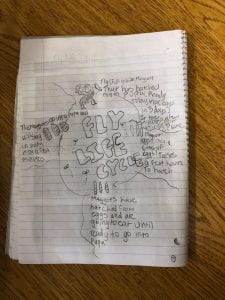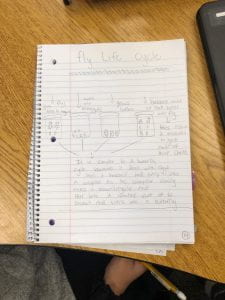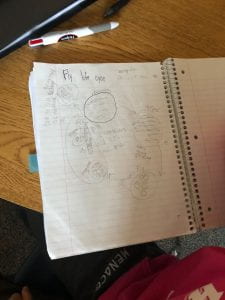October 2019 archive
5th Grade:
5th grade scientists came to school on Monday ready to investigate their dead plant environments and noticed some pretty big changes that happened over the weekend.

Here were some of their findings: MOLD. The mold had spread in all of the containers that were stored in a cooler! Some even noticed that the worms in their containers were beginning to get moldy as well. The environment that was placed in the window had no mold and you could barely see the raspberries anymore! The container that got watered daily had worms in it that were still alive.
This posed many new ideas and wonders, which lead to our next thought… we need to figure out how worms affect dead plants and how mold spreads…
The 5th grade scientists have some work to do… stay tuned for their new investigation plans and discoveries!
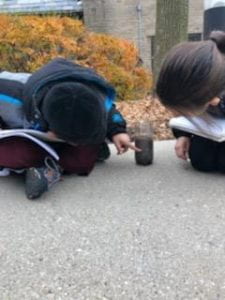
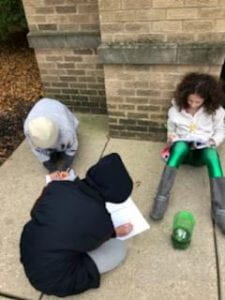

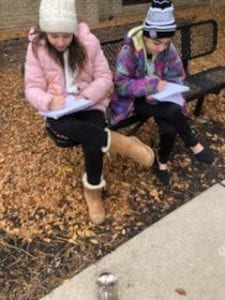
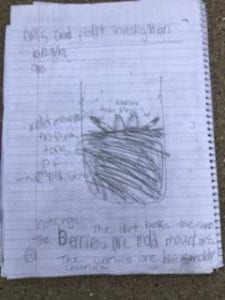

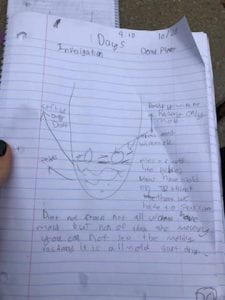

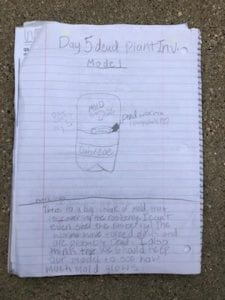


6th Grade:
6th grade scientists have started to investigate how food causes populations to change. However, before we can even start thinking about populations, we needed to figure out the science behind what food is, what it is made up of, and why we need it to survive.
So far, the 6th grade scientists have all agreed on the following important scientific ideas related to food:

We then started to look at food labels and the substances that make up food. We found that the most common substances in foods were protein, carbohydrates (sugars and starches), and fats. Thus came my next question to the scientists, “Sure, these food labels say what substances are found in these foods, but how can we PROVE that?” 6th grade scientists shared out some great ideas and we decided the best way would be to test different foods for protein, carbs, and fats.
The scientists spent the next two classes testing foods that many of us eat often (honey, rice, butter, etc.) to see if the food labels were actually true and correct.
Ask your scientist at home what they figured out!

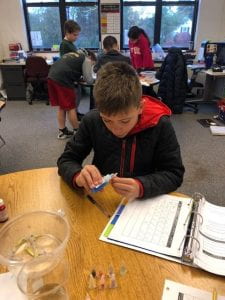





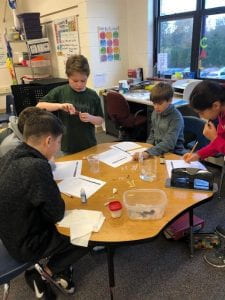

Have a great night,
Gev. McAdams
Last week, the 5th grade scientists spent their class time planning their first live investigation to see what happens to dead plants over time. I was so excited to see how adamant the 5th grade scientists were about making this experiment a fair test (ask them what this means!!)
Without much guidance from me (as the kids are the scientists) they planned out their investigation models with so much detail so they knew exactly how they wanted to set up their live dead plant environments.
Rather than me going into detail and explaining everything, our 5th grade scientists are the true experts so make sure you ask them about this experiment and what they have noticed and/or learned thus far!
This is just the beginning, our scientists have already started noticing some important pieces of information that will soon lead to our next experiment!
Stay tuned!
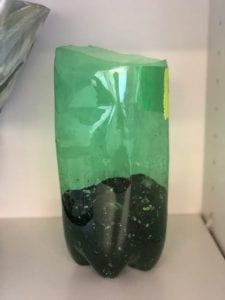
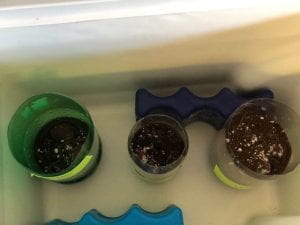
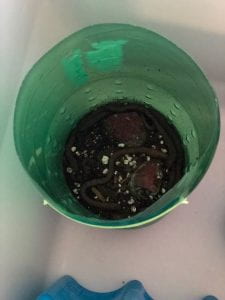

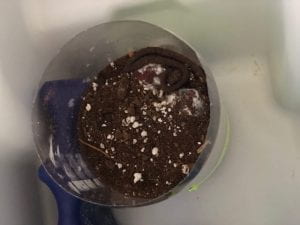



Today, during “Fact Friday” in 5th grade, we learned a game to practice multiplication facts.
It is a fun game to play at home as well!
Below, you can find the instructions and the game board. All you need are two dice and some markers!
Have your child or children explain the rules to you 🙂

For a challenge here is a very similar game for multiplication facts up to 12 (we will be playing this one for part of class next Friday):

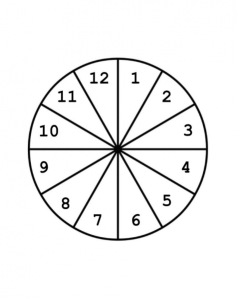
This week, 6th graders set up our first driving question board.
Never in a million years would I have known that this was their first time doing this in science because the questions they asked were SO GOOD.
To develop their questions, students were asked to think about the question, “What can cause populations to change?”
In the end we created 5 categories that we will begin to investigate next week: food/water, other organisms, environment, economics/government, and reproduction.
Stay tuned!
Take a look below at the awesome questions the kids came up with!

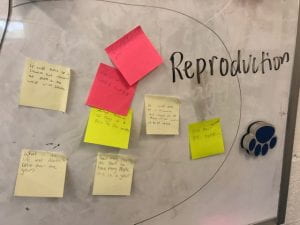




Have a great day,
Gev. McAdams
First off, let me just say how proud I am of all the 5th graders. They have been doing an incredible job of asking questions and working with each other. I love how if someone needs clarification on a concept, they are always willing to ask so they have a better understanding of what we are learning. I know that when I was in 5th grade I was WAY to afraid to even ask for help. The fact that each and every 5th grader is able to voice their needs, really, truly amazes me and makes me so proud of all of them.
The past 2 weeks the students have been working on the following I can statements:
- I can convert between fractions and mixed numbers using visual fraction models.
- I can add and subtract mixed numbers with like denominators.
- I can add and subtract fractions with unlike denominators.
Yesterday, the kids made tutorials on how to add fractions with unlike denominators. Make sure you check them out on their blogs!
Also, if you have not seen their math notebooks yet, be sure to ask your child about it! Everything we have been working on in class can be found in it.
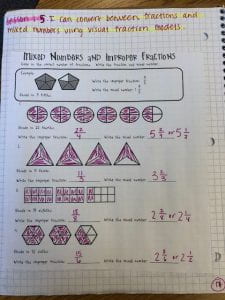


Have a great day,
Gev. McAdams
Today, at lunch, students learned all about this years Yearbook Art Contest! Students need to incorporate the school’s rally cry, Moving From Me to We, into the design.
All artwork should be turned into the office by the end of the school day on Friday, October 25. Students may work collaboratively, or independently and each submission needs to include their name(s) on the submission piece. There are three spots open for artwork placement in the MJDS yearbook: the cover, the back cover and an inside page.
I am so excited to see some of the awesome artwork our students create this year!

We really lucked out today with the beautiful weather for Tashlich! The 6th graders were awesome role models for the younger students and did an amazing job walking the senior kindergartens to and from Klode Park. We had a thoughtful conversation about regrets/mistakes we have made and goals we have moving forward before throwing our “mistakes/regrets” into Lake Michigan.
Check out some of the pics from our morning!
-Gev. McAdams

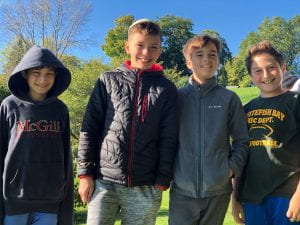
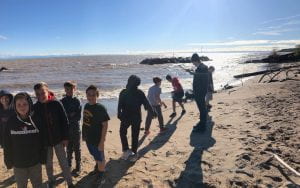
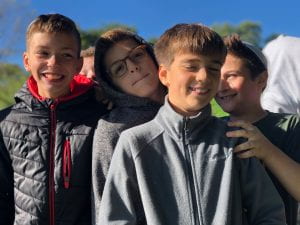
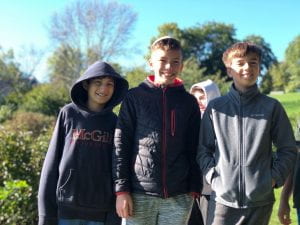
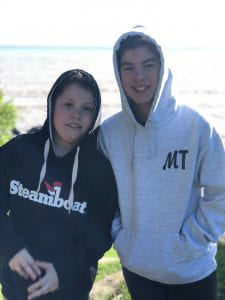
Our main focus in science this quarter is on developing models to explain our thinking. Our scientific investigation based on the question, “Why do dead things disappear over time?” is in full swing and our class of scientists are doing an incredible job modeling what they have been figuring out.
So far, the 5th grade scientists have come to the conclusion that flies are a huge factor in causing dead animals to disappear over time. To look into this more, we have been watching many videos on flies and researching the life cycle of a fly. Once the 5th grade scientists felt that they had a strong understanding of the life cycle, they each created a model to show and explain each stage. This allowed the class to conclude that the flies lay their eggs on the dead animal, once the eggs hatch, maggots eat the animal for nourishment and growth. Once the maggots have grown, they develop hard shells over their bodies where they can fully develop into a fly. Then, the process starts all over again (the life cycle!!!!).
So we are done, right? We figured out that maggots eat the dead animal causing it to disappear. BUT….remember, our driving question is “Why do dead things disappear over time?” Sure, we might have a pretty strong understanding of what happens to dead animals over time, but what about other dead living things? Hmmm…
Soooooo, the 5th grade scientists then started to brainstorm other things that die. Our top contender was plants (trees, flowers, etc). Scientists were asked to go home and think about ways we could investigate what happens to these dead plants over time.
I am sad we do not have science again until Monday because I am so excited to hear ideas for our next investigation from our 5th grade scientists!
Check out some of their awesome fly life cycle models below!
-Gev. McAdams
